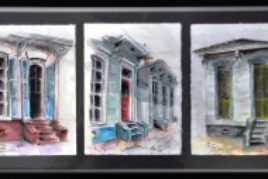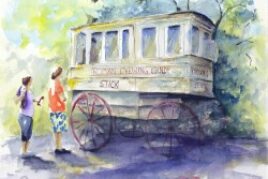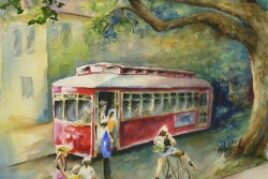
What are Copyrights?
The artist’s rights as for as all her original art work….. Copyright protection subsists from the time the work is created in fixed, tangible form. The copyright in the work of authorship immediately becomes the property of the author who created the work. Only the author or those deriving their rights through the author can rightfully claim copyright. A work that is created (fixed in tangible form for the first time) on or after January 1, 1978, is automatically protected from the moment of its creation and is given a term of copyright protection enduring for the lifetime of the artist plus an additional 70 years after the artist's death. photographs of works of art in the public domain may themselves be copyrighted and will likely require a license for publication, The owner of a copyright for a work of art gives that person the exclusive right to do and to authorize others to do the following: • To reproduce the work in copies • To prepare derivative works based upon the work; • To distribute copies of the work to the public by sale or other transfer of ownership, or by rental, lease, or lending; • To display the copyrighted work Any or all of the copyright owner's exclusive rights or any subdivision of those rights may be transferred to another party, but the transfer of exclusive rights is not valid unless that transfer is in writing and signed by the owner of the copyright or such owner's duly authorized agent.

What is Giclee Printing?
By definition, my fine art reproduction prints are “Giclées”: Giclée (commonly pronounced "zhee-clay") is the name for the process of making fine art, high-quality prints, from a digital source, using ink-jet printing. The word "giclée" is French for spray. It is an individually produced, high-resolution, high-fidelity, high-tech reproduction done on a special large format printer. Giclées can be printed on any number of media, from canvas to watercolor paper. Giclées are superior to other forms of print production in nearly every way. The colors are brighter, last longer, and are so high-resolution that they are virtually continuous tone, rather than tiny dots. The range (or "gamut") of color for giclées is far beyond that of most other print production processes, and details are crisper. Giclées use ink jet technology, but far more sophisticated than your desktop printer. The process employs nine colors of ink (variants of black, cyan, magenta, and yellow) that are durable, light-fast (fade resistant) and pigment based, with a display life of upwards of 108 years (under normal, indoor, environmental conditions). The ink is sprayed onto the paper or canvas, actually mixing the color on the page as it does so, to create truer shades and hues. Giclée prints are coveted by collectors for their fidelity and quality, and desired by galleries and artists alike. My printer uses large format printers manufactured by Epson, one of the most prominent names in the industry.

What is Watercolor Painting?
Watercolor painting is an art form that creates artistic representations, usually on paper, using pigments that are water-soluble. Watercolor painting employs a variety of different techniques specific to the medium. The most characteristic is perhaps the technique known as wet-in-wet, in which large portions of the paper are wet, either with an earlier application of a wash of color or with plain uncolored water.

What is Original Artwork?
Original artwork means that it is something done by the artist's own hand and of the artists own intention.
